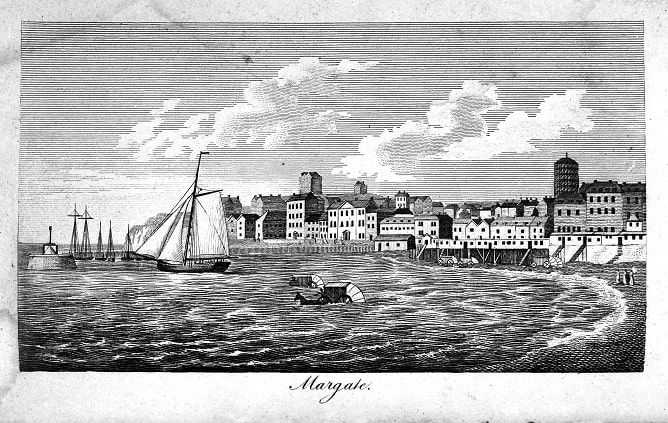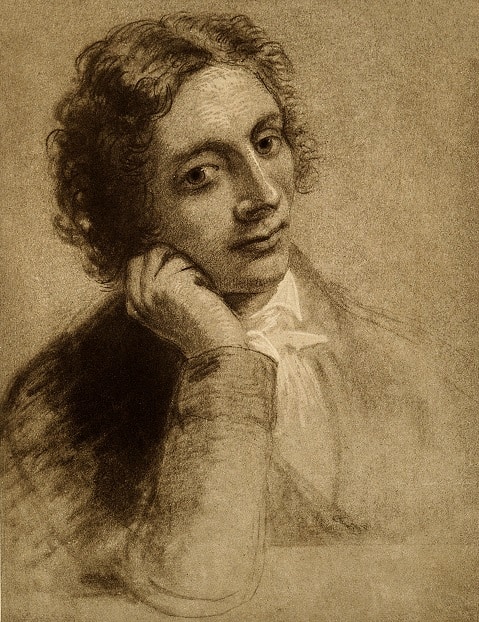
Mention “poet” and “Margate” in the same sentence and most likely T.S. Eliot and The Waste Land will come to mind. But Eliot, who wrote sections of the poem while convalescing in the town during 1921, wasn’t the first poetical giant to visit the area.
Just over a century earlier, during the later summer of 1816, a young man came to the Margate on holiday. He had recently qualified as an apothecary (today we call them GPs) and wanted to escape the summer heat of London. While here he had a decision to make, should he continue to pursue a career in medicine or commit himself fully to poetry?
The young man was John Keats.
Now established as one of the great romantic poets, Margate was where he began to explore and develop his poetical imagination; to “strive to think divinely” while observing the sights and sounds of nature.
Accompanied by his brother Tom,16, who was suffering from the early effects of consumption, Keats would write several poems, as well as correspond with friends.
The first poem he worked on was Calidore, a dreamy romantic tale of chivalry inspired by Spenser’s The Faerie Queen, but he soon abandoned it. Keats followed this with a sonnet and an epistle (a poem written in the form of a letter). Both were titled To My Brother George.

In the sonnet, Keats describes his reaction to seeing the “ocean” for the first time — “its vastness, its blue green, / Its ships, its rocks, its caves”. The poem reflects the author’s excitement but also uncertainty about his literary future.
In the epistle to his brother, Keats considers the function and merit of poetry, as well as his struggle accommodate his duties at Guy’s Hospital with his poetical ambitions.
The Keats brothers had come to Margate on the recommendation of Charles Cowden Clarke. It’s not known where they stayed, though some believe it was one of the rooms overlooking Hawley Square.
Clarke had been John Keats school teacher and had encouraged his young student to form an interest in poetry. Keats wrote an epistle to him, in which he pays tribute to their friendship and Clarke’s influence upon his life: “had I never seen / Or known your kindness, what might I have been?”
Shortly after writing his epistle to Clarke, in late September, the Keats brothers returned to London. Throughout his stay in Margate John Keats had felt a growing sense of loneliness, despite having Tom for company, which he enjoyed. But he missed his bold iconoclastic friends of London’s literary scene and his brother George.
Keats returned to Margate during the spring of 1817. Since his last visit he had turned his back on the medical profession and had published his first poetry collection Poems.
For a while he had been struggling to write Endymion, his long poem about a shepherd from Greek mythology beloved by the moon goddess Selene. For Keats the poem’s composition was part of his apprenticeship, a “trial of my powers of imagination”. But despite having slaved over it for weeks he found he was suffering from writer’s block. Once back in Margate he hoped his creative juices would again start flowing.
Again accompanied by Tom, after a few days sightseeing, he began an eight hour regime of reading and writing. In a letter to James Henry Leigh Hunt (critic, essayist and poet), Keats writes how the poem’s composition was still an “uphill journey”, but his passion for the task was reinvigorated.
But his eagerness was to suffer a setback. A £50 loan (about £4,311 today) to his brother George had been lost on a failed business venture, leaving Keats strapped for cash. His publisher, Taylor & Hessay, alleviated his financial worries a little by advancing him £20 (around £1,724 today). In a letter, dated 16th May, he thanked them for their “liberality” and announced it would be used to “destroy” a few minor debts, which he compared to a “spring-headed Hydra”.
The incident left Keats feeling anxious and again unable to write, “my brain is so overwrought” he complained to his publisher. “I have endeavoured to [write] … once or twice but to no purpose”. Having “grown tired of Margate” Keats left for Canterbury, where he hoped the “Remembrance of Chaucer” would get him writing again, or as he put it “set me forward like a billiard-ball”. Endymion: A Poetic Romance was published in 1818.
John Keats never returned to Margate. He died in Rome on 23rd February 1821 from the effects of tuberculosis.

